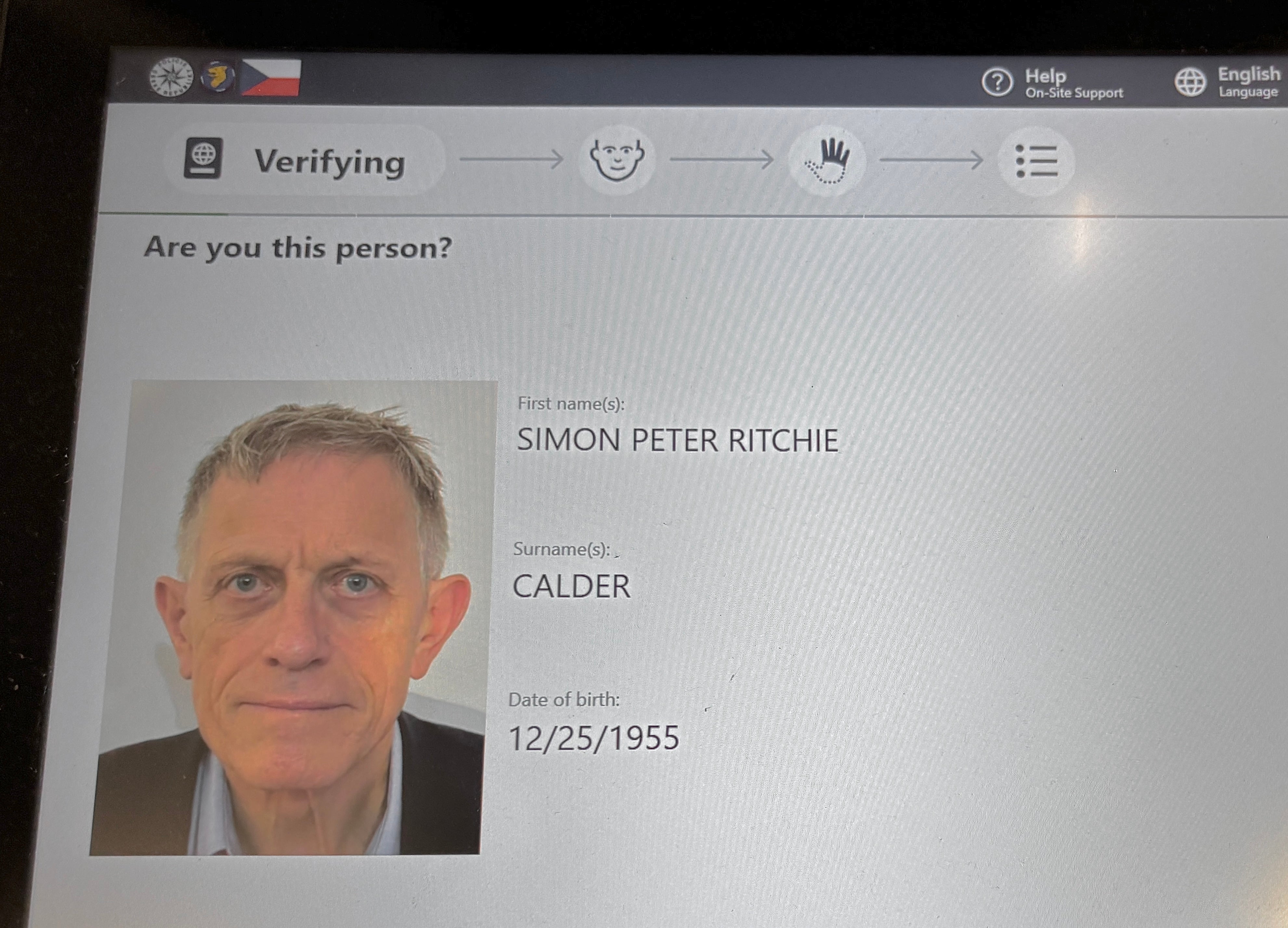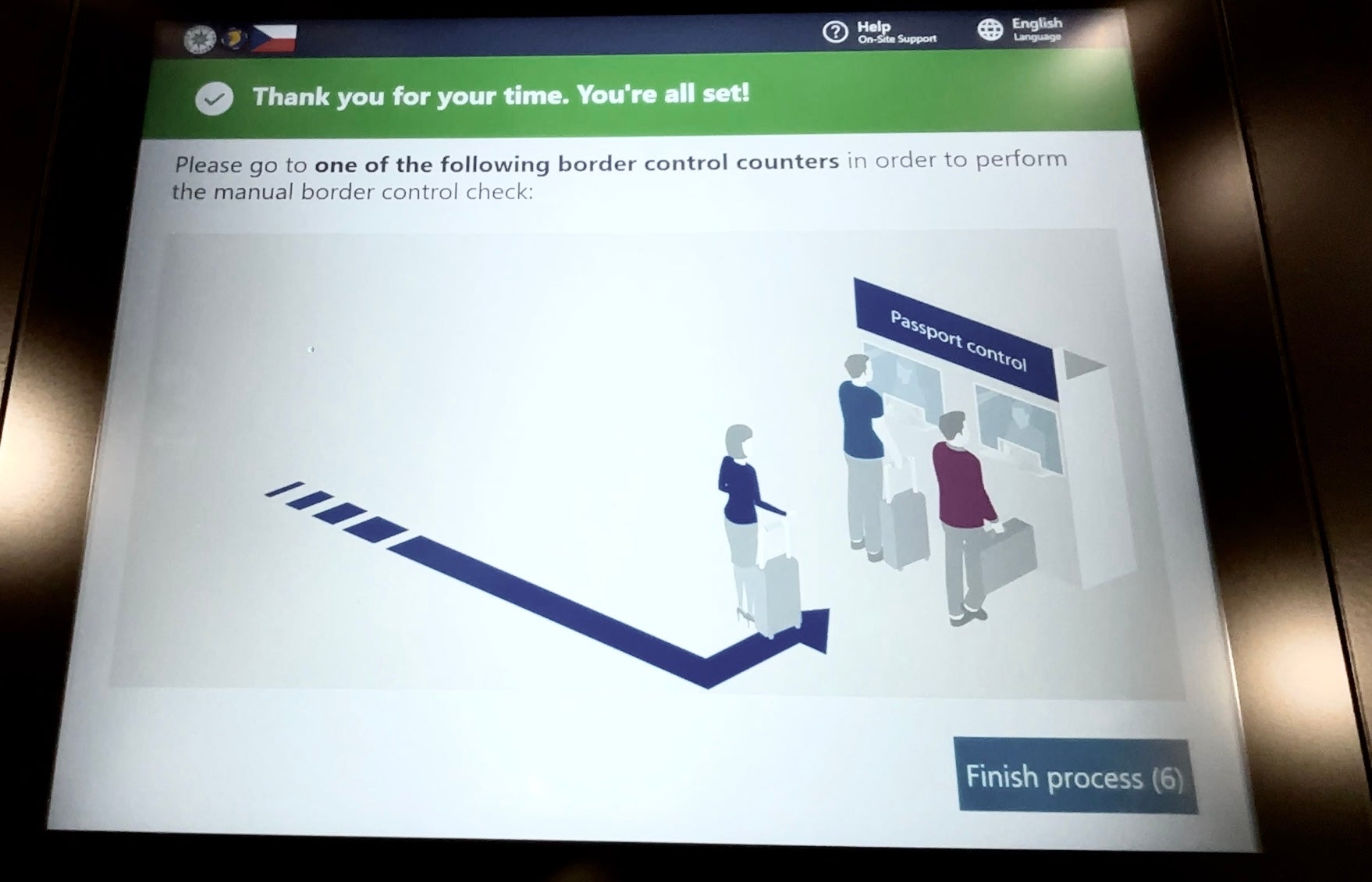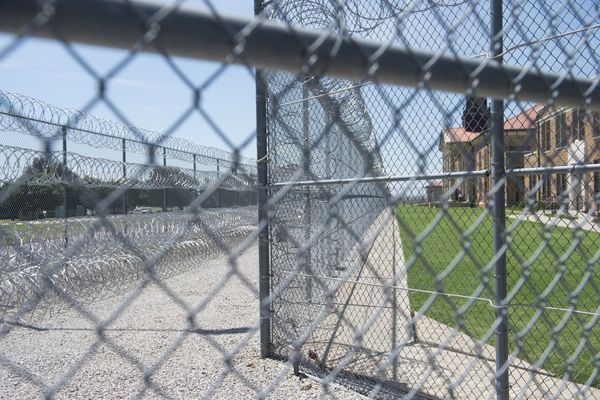“Your passport, fingerprints and photograph, please.”
Some British travellers to the European Union are now having their biometric data collected, as the latest impact of Brexit on journeys to Europe takes effect.
The long-awaited EU entry-exit system, Europe’s digital border scheme, began its six-month-long rollout on Sunday 12 October 2025. Simon Calder tested the system in Prague, the biggest European airport going for 100 per cent inbound biometric registration on day one.
This is his second-by-second guide to hand-to-hand combat with the EES at airports in the Schengen area. Please note it applies to the system as introduced in the Czech Republic; your experience entering other nations will vary.
0m00s: The clock starts when you arrive at an airport entry-exit system kiosk. These may be dotted randomly along corridors as you walk from the aircraft, or concentrated in a block. Or both, as is the case in Prague. My advice: grab the first one you see without a queue.
Each kiosk has a main screen that takes you through a series of operations. First task: select language. English is top left. You can skip this part by putting your passport on the scanner, saving a second or two.
0m05s: Place passport on scanner, with the personal data page facing down. You then get the weird sight of that page appearing in monochrome, upside-down, for four seconds. Then it presents the photo from your passport, your first names, surname and date of birth – and asks: “Are you this person?”
The correct answer, assuming it is your passport, is: “YES: Proceed.”

0m25s: “Do you own a long-term residence permit?” The aim of this question is to filter out non-Schengen citizens who have already registered their biometrics, as this is required to get a long-term residence permit. The screen shows an example, belonging to “John Traveller” and issued in the city of “Utopia”. Almost everyone will answer: “No.”
0m45s: Time to capture an image of your face. There are strict instructions:
- Look straight into the camera in front of you.
- No masks!
- No head coverings!
- No sunglasses! (Regular spectacles are fine)
It doesn’t actually say “no smiling”, but I find that’s always wise in these situations.
0m57s: Now comes the tricky part: fingerprint scanning. A flashing light indicates where to place your hand. You need to scan both hands – four fingers at a time.
Place your fingers flat on the reader and hold them still. The screen gives you a readout of how you are performing – red for “no”, yellow for “could do better”, green for “good”.
1m34s: With luck, your prints will be accepted. Next, the questions begin.
1m35s: The machine asks: “What’s the purpose of your trip?”
Options for the Czech Republic include business, tourism, official meetings, medical treatment, and even spa stays. There’s also a whole section for social or sporting events. “Private Tourism” is a good option.
1m43s: Now for the potentially awkward sequence of questions, about whether you meet Czech and wider Schengen area admissibility conditions.
- Confirmation of accommodation?
- A return ticket?
- Means of payment?
For the last of these, you can select from:
- Fully paid by the inviting party
- Cash (minimum €66/£57 per day)
- Credit or debit card
2m03s: “Please select the return date.” A calendar pops up: you can click forward to the following months, but you will not be able to stay more than 90 days.
2m09s: “Do you have travel insurance?” I suspect many arrivals, for example on Prague stag and hen adventures, will answer “Yes" even if the correct answer is “No”.
The UK government insists: “Medical insurance will not be a mandatory requirement for UK citizens travelling to the EU under EES. However, we strongly recommend that all passengers purchase comprehensive travel insurance, including medical cover, before travelling abroad.”

2m19s: After you press “Continue”, the system asks you to wait for seven seconds while it (presumably) communicates with the EU database.
2m26s: “Thank you for your time. You’re all set! Please go to one of the following border control counters to perform the manual border check.”
A final reminder that the EES is simply an extra layer of bureaucracy on top of the existing border control process – at least until April 2026.
I am travelling to the EU. What has changed with the entry-exit system?
What happened as the EU entry-exit scheme finally took effect?
Will the entry-exit system apply if my cruise ends in Barcelona?
Is it safe to travel to Mexico amid devastating floods?
Commuter chaos after Manchester-Liverpool train line shut
Which airlines have upper deck economy class on the Airbus A380?







